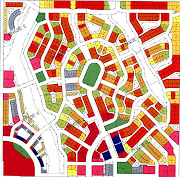How Will America Grow on Its Way to 400 Million Residents?
Click here to refresh: http://www.newherbanism.blogspot.com/
The United States just crossed the 300 million population mark and this suggests that we consider what will happen as we head to the 400 million mark which we will hit some time around 2040.
Right now each person is taking almost 20 percent more developed space than 20 years ago. We can not continue our car-dependent land-use pattern on the way to 400 million people without acute environmental damage and heavy quality-of-life costs, reports USA Today writer Haya El Nasser, citing experts whose calls for alternatives have strongly resonated among the public especially this electoral season.
''We're going in the wrong direction right now. The rate of land consumption is twice the rate of population growth,'' points out Smart Growth America Executive director Don Chen. ''There's been a real change in the American consumer looking at how they live,'' observes Cambridge-based Lincoln Institute of Land Policy Public Affairs Manager Anthony Flint, author of This Land: The Battle Over Sprawl and the Future of America. ''We've been spreading ourselves out generously and thinly across the land because we could. Energy was cheap. It made sense to satisfy our longing for elbow room, wide open spaces, a sense of security and . . . affordability.''
Virginia Tech's Metropolitan Institute Co-director Arthur C. Nelson expects the next 100 million residents to add 73 million jobs, about 70 million housing units and 100 billion square feet of non-residential space, mostly in the major metropolitan areas. Unlike households in 1960, half with children, about 35 million of the new 40 million households by 2040 will lack children, which will increase the total percentage of households without children to three quarters. ''Their demands are going to be different,'' Director Nelson says. ''Suburban areas will have to transform themselves to meet the new needs.''
Still, he predicts that many households ''will want, will demand and will get their single-family detached homes on a lot,'' adding, ''Where it used to be 80 percent, it might slip down to 60 percent,'' which means that ''(w)e will never get rid of congestion, but we might be better able to handle it.''
Source: Adapted from USA Today 10/27/2006
Tuesday, October 31, 2006
Subscribe to:
Post Comments (Atom)



No comments:
Post a Comment